The island’s treasure, Palmyrah, is known as ‘Thal’ tree that graces the dry zones.

Dotting the rustic backgrounds of the island are the Palmyrah palms or locally known as ‘thal’, with a myriad of purposes. The commonly found Asian Palmyrah (Borassus Flabellifer) is a treasure to Sri Lankans, and the rich cultivation spans Sri Lanka’s north and north-eastern and southern landscapes. These Palmyrah palms are commonly found in Jaffna, Kilinochchi, Mannar, Mullaithivu, Trincomalee, Batticaloa, Puttalam, Ampara, Anuradhapura, Vavuniya, and Hambantota. The Tamils in the North often believe it as ‘heavenly palm’ or ‘celestial tree’ as it enhances their livelihoods. Palmyrah grows in arid soil and dry climates, and they reach a height of 30m or higher with a lifespan of around 120 years. The tall trees that stand against the blue skies have robust, cylindrical trunks and fan-like leaves. The trees bear fruits between February and May, and they appear purple-black in color with a shade of dark yellow and are round and coconut-shaped. The female Palmyrah plant produces about six to 12 bunches of fruits annually.
It is one of the wonders of the island. From the top of the plant to the bottom, it is said that the palm has 800 uses, ranging from food to building materials, decorative and utility wares, and writing materials.
It is one of the wonders of the island. From the top of the plant to the bottom, it is said that the palm has 800 uses, ranging from food to building materials, decorative and utility wares, and writing materials. Another interesting feature of the Palmyrah and talipot leaves in Sri Lanka and India was used earlier to pen historical and important records. It was used to make a paper known as puskola, and this practice continues even today, where ‘thal’ leaves are used in writing traditional horoscopes and astrological forecasts. Sri Lanka’s famous ‘Palmyrah toddy’ or ‘Thal raa’ in Sinhala and ‘Pannang Kallu’ in Tamil is a never-to-be-missed beverage. The Palmyrah toddy is made from the sap of the Palmyrah. The Palmyrah flowers are cut, and clay pots are tied to the flower stump to collect the sap. Sap from both male and female trees are extracted. The collected toddy is distilled, and the strong smell of the fermented toddy is sure to satisfy and unwind one.
Toddy tapping is a livelihood and a way of living that is part of the texture of North Sri Lankan life. It will be so as long as Northerners crave their toddy, and as long as the Palmyrah flourishes in these soils. During a visit to the North, enjoy this natural beverage where the Palmyrah is cut open to sip the sweet, clear liquid containing sugar, vitamins, and minerals. Relish the inner flesh, which is a sweet jelly-like kernel called ‘nungu’ in Tamil. Fresh toddy is boiled into a bitter-sweet syrup, a more nutritious and healthy sugar substitute. It is also made into vinegar. Commercially, the fruit is made into delicious soft drinks and cordials.
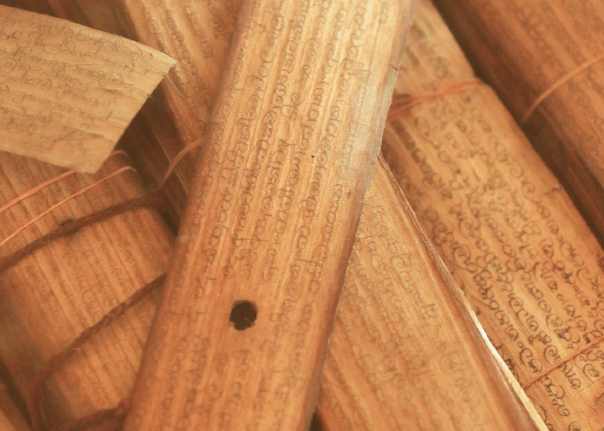
Even today, the art of penning in palm-leaf manuscript continues.
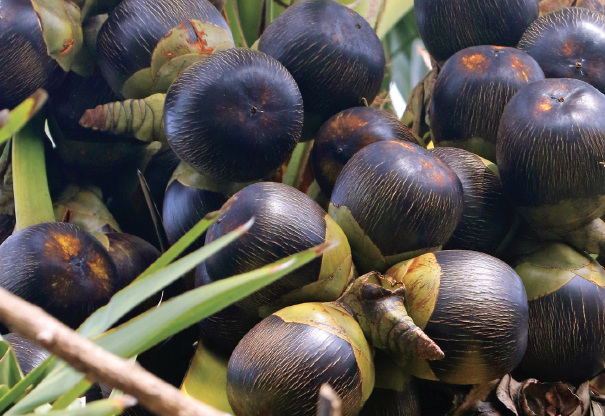
A sip of fresh palmyrah is surely refreshing.
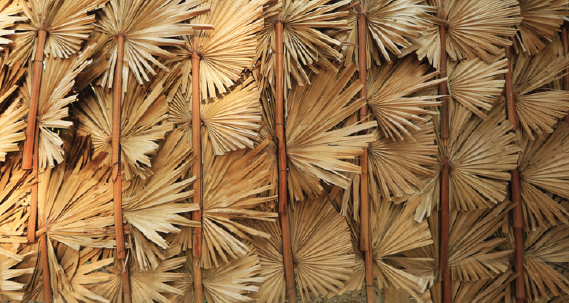
Dried palms used for fencing purposes reflect a rustic expression.
Even the fibrous part of the fruit can be eaten when ripe, raw, boiled, or roasted. The pulp is exported to several countries. The ripened fruit is used to make sweets that are known as delicacies of Jaffna. The fruit pulp is extracted and used to prepare kavum, a type of fried cake, and thal pinatu, a candy made of sheets of dry pulp sweetened with treacle. While Thal hakkuru (palm jaggery) made from the sap is poured into woven baskets made of thal leaves called kuddan. This sweetener can be enjoyed with a variety of food combinations. One can find stacks of neatly piled sweet toddy products such as Palmyrah jaggery, Palmyrah candy, Palmyrah palm sugar, and bottled sweet toddy freely available from the street vendors and markets in the North. Another popular snack, kotta kilangu or odiyal (palm sprout), is nutritious. The sprouts are left to germinate for about four months, then cleaned, boiled, and sun-dried. Palmyrah or odiyal flour is used in traditional Jaffna staples like Odiyal Kool, laddu, and Odiyal Pittu. It is also believed that the multi-purpose palmyrah has medicinal properties too. Various parts of the tree serve multiple ailments. Dried leaves of the Palmyrah are used to manufacture handicrafts such as mats, baskets, containers, and decorative ware. In the northern areas, it is common to sight houses fencing with Palmyrah leaf.
The Palmyrah fronds are left to dry and arranged in a neat pattern before being fenced. In the Northern Province, Palmyrah weaving keeps several traditions alive and provides a source of income. Women and young girls are seen busily engaged in this ancient craft. Dried Palmyrah leaves are sun-dried and split into thin strips. These strips are dipped into pots of hot water, and the dye is added. Soon afterward, the strips are dipped into cold water, and they retain a vibrant color. These strips are left to dry, and after that, the weaving commences. Young ladies and women painstakingly weave unique patterns of hats, bags, garlands, fans, wall hangings, gift boxes, table mats, and knickknacks. The traditional art of Palmyrah weaving is definitely eye-catching, engaging to watch, as well as biodegradable, and the products are pretty popular among the tourist industry. The hardy fiber from the young Palmyrah is ideal for making utility items like rope, brushes, and brooms. The stem, which yields a sturdier fiber, makes fine furniture like stands and cabinets. The fiber that connects the branches to the tree trunk, called matta, is known to be one of the strongest fibers in the world and is used as a substitute for steel wire mesh to line tires. The Palmyrah timber is heavy, hard, durable, and valued for construction, especially to make roofing beams and wharf pilings. Tall Palmyrah trees across the horizon will capture your attention as you journey towards the North. If you are lucky, you might even get a chance to experience the taste of Palmyrah toddy or Thal raa en route to your destination. Also, roadside stalls will display fresh palmyrah fruits that you can stop by to savor the taste. Palmyrah palms are indeed a treasure to the tropical island!
One can find stacks of neatly piled sweet toddy products such as Palmyrah jaggery, Palmyrah candy, Palmyrah palm sugar, and bottled sweet toddy freely available from the street vendors and markets.
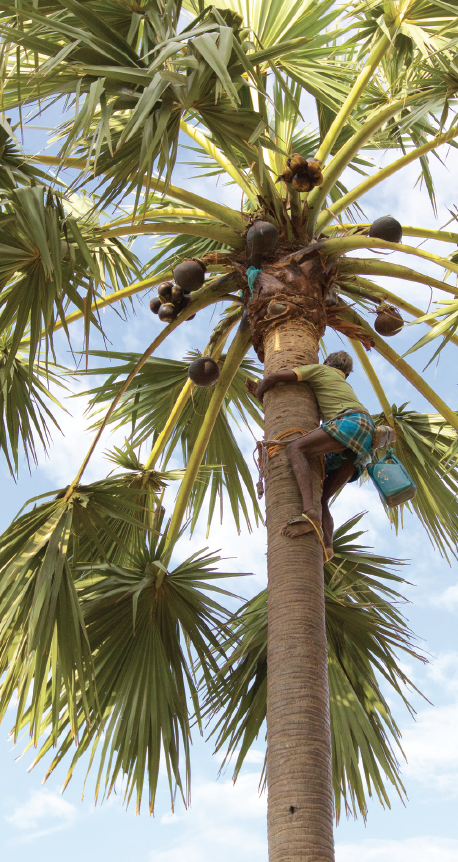
Toddy tapping is an authentic process.
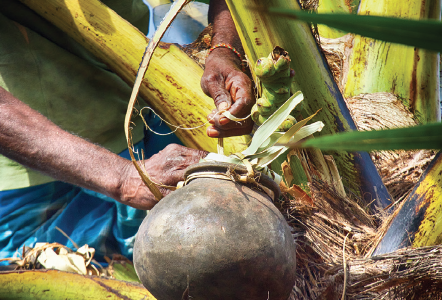
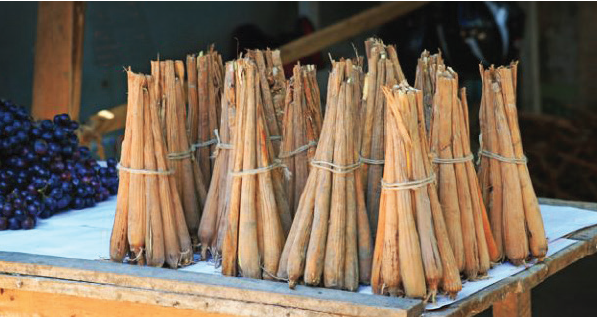
Watch out for bundles of Odiyal from roadside stalls to take home or crunch on the way.
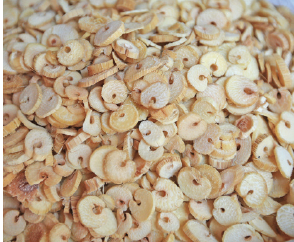
Enjoy it in the form of chips.
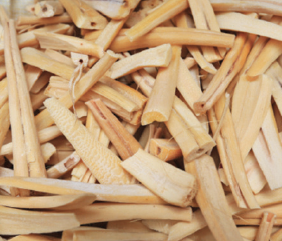
Odiyal has an exotic taste.
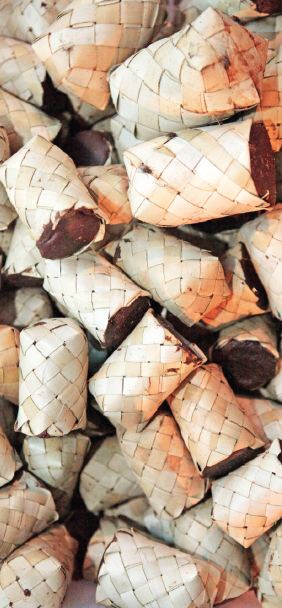
Cutely packed kuddan – a sweet delicacy.
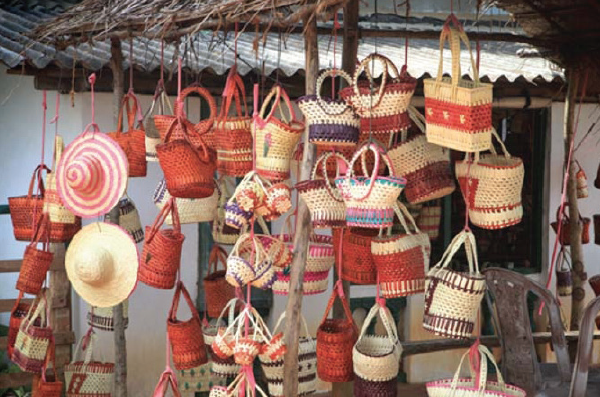
Stop by! Take home some of the beautifully woven palmyrah handicrafts.


